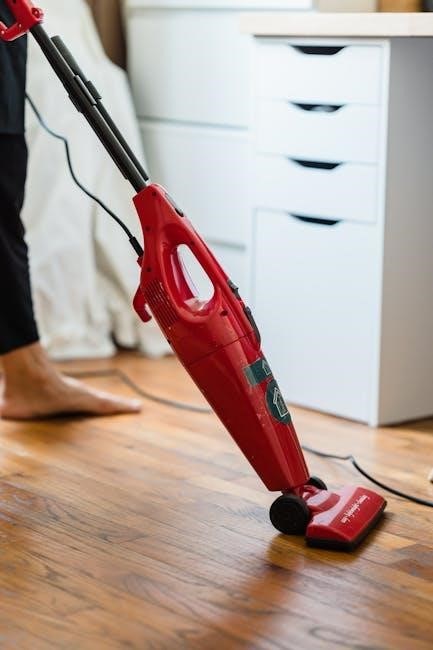manual vs electric recliner
- by stephany

Manual vs. Electric Recliner: An In-Depth Comparison
Selecting between a manual and electric recliner involves weighing factors such as price and convenience. Manual recliners are budget-friendly, while electric models offer effortless adjustment. This comparison explores the features, maintenance, and flexibility of each, guiding you to the perfect choice.
Recliners offer comfort, relaxation, and customizable support in living spaces. Manual recliners, the traditional option, operate through levers or body weight, offering a simpler design. Electric recliners, also known as power recliners, utilize motors for effortless adjustments via buttons or remote controls.
The decision between manual and electric recliners depends on preferences, budget, and physical needs. Manual recliners are more affordable and require no electricity, making them versatile for any room placement. Electric recliners offer convenience, customizable positioning, and features like lumbar support and USB ports.
This comparison explores the key differences between manual and electric recliners, considering affordability, ease of use, placement flexibility, maintenance, and features. By understanding these factors, consumers can make informed decisions, selecting the recliner that best suits their lifestyle and enhances their relaxation experience.
Whether prioritizing simplicity or advanced functionality, this guide provides insights for finding the perfect recliner to meet individual needs and preferences, ensuring optimal comfort and satisfaction in any home.

Key Differences: Manual vs. Electric Recliners
Manual and electric recliners diverge significantly in operation and features. Manual recliners rely on levers or body weight for reclining, demanding physical effort. Electric recliners utilize motors, providing effortless adjustments via buttons or remotes.

Positioning options vary; manual recliners offer limited, fixed positions, while electric recliners allow for infinite adjustments, customizing backrest and footrest angles. Power recliners also offer advanced features like adjustable lumbar support, memory settings, and USB ports for device charging.
Placement flexibility differs as well. Manual recliners, not needing outlets, can be placed anywhere. Electric recliners require proximity to power sources, though battery packs offer some flexibility.
Maintenance needs also contrast. Manual recliners, with fewer components, require less maintenance. Electric recliners, having motors and electrical systems, may need repairs or replacements, though warranties offer reassurance.
Price is a significant factor. Manual recliners are generally more affordable due to simpler mechanisms. Electric recliners, with added features and electrical components, come at a higher cost. These key differences guide consumers in selecting the recliner that best aligns with their needs and preferences.
Affordability: Price Comparison
When considering recliners, price often plays a crucial role in the decision-making process. Manual recliners generally present a more budget-friendly option due to their simpler, non-electric mechanisms. The absence of motors and complex electrical components translates to lower manufacturing costs, making them an attractive choice for cost-conscious buyers.
In contrast, electric recliners typically come with a higher price tag. This is primarily attributed to the inclusion of advanced electrical systems and motorized reclining features. The added convenience of effortless adjustments, memory settings, and integrated USB ports contributes to the increased cost.
While manual recliners offer essential reclining comfort at a lower price point, electric recliners provide enhanced functionality and versatility for those willing to invest more. The price difference can range from several hundred to over a thousand dollars, depending on the brand, features, and materials used.
Ultimately, the choice between manual and electric recliners hinges on individual budget constraints and the perceived value of the additional features offered by electric models. Weighing the initial investment against long-term comfort and convenience is essential in making an informed decision.
Ease of Use and Physical Effort
The operational experience differs significantly between manual and electric recliners. Manual recliners require physical effort, typically involving pulling a lever or pushing back against the chair to recline. While some models feature long-handle options for easier operation, this can still pose a challenge for individuals with limited strength or mobility.
Electric recliners, conversely, prioritize effortless operation. With the simple push of a button, users can seamlessly recline, adjust the footrest, and even activate additional features like heat or massage. This hands-free functionality makes electric recliners particularly appealing to seniors, individuals with disabilities, or anyone seeking maximum convenience.
The level of control also varies. Manual recliners offer a limited number of fixed reclining positions, while electric models provide infinite adjustability, allowing users to fine-tune their position for optimal comfort. Independent adjustments of the backrest and footrest further enhance the personalized experience.
Ultimately, the choice depends on individual physical capabilities and preferences. Those seeking a more active reclining experience may appreciate the simplicity of manual recliners, while those prioritizing ease of use and customized comfort may prefer the convenience of electric models.
Positioning Options and Customization
Manual recliners typically offer a limited range of fixed reclining positions, often locking into one of three leg rest settings. This constraint restricts the user’s ability to fine-tune their seating angle for optimal comfort. Customization is minimal, primarily limited to the choice between upright, partially reclined, and fully reclined positions.
In contrast, electric recliners provide a vast array of positioning options and customization features. With the push of a button, users can effortlessly adjust the backrest and footrest independently, achieving virtually limitless reclining angles. This allows for a highly personalized seating experience tailored to individual preferences and needs.
Furthermore, many electric recliners offer advanced features such as adjustable lumbar support, which provides targeted support to the lower back, promoting proper posture and reducing discomfort. Memory settings enable users to save their preferred reclining positions for instant recall, further enhancing convenience and customization.
Some electric recliners also incorporate USB ports for charging electronic devices, adding a practical touch to the luxurious seating experience. The extensive positioning options and customization features of electric recliners cater to those seeking the ultimate in personalized comfort and convenience.

Placement Flexibility: Power Outlet Dependency
Manual recliners offer unparalleled placement flexibility due to their lack of reliance on a power outlet. This allows you to position them virtually anywhere in a room, regardless of proximity to electrical sources. This versatility makes manual recliners ideal for smaller spaces or rooms where power outlets are limited or inconveniently located.
Conversely, electric recliners are inherently dependent on a nearby power outlet for operation. This necessitates careful consideration of room layout and outlet availability when determining placement. The need for a power source can restrict the positioning options and limit the overall flexibility of electric recliners.
To mitigate this limitation, some manufacturers offer electric recliners with optional rechargeable battery packs. These battery packs provide a degree of portability, allowing for temporary placement away from a power outlet. However, the battery will require periodic recharging, and the usage time between charges may be limited.
Despite the availability of battery packs, the power outlet dependency remains a significant factor to consider when choosing between manual and electric recliners. If placement flexibility is a primary concern, a manual recliner offers a clear advantage. However, if the convenience of electric operation outweighs the placement limitations, an electric recliner may still be a viable option.
Maintenance and Durability
Manual recliners, with their simpler mechanical design, generally require less maintenance than their electric counterparts. The absence of motors, electrical components, and complex systems translates to fewer potential points of failure, resulting in enhanced durability and longevity. Regular cleaning and occasional lubrication of moving parts are typically sufficient to maintain optimal performance.
Electric recliners, on the other hand, incorporate motors, wiring, and electronic controls that may require occasional servicing or repairs. While modern electric recliners are engineered for reliability, the increased complexity inherently introduces a higher risk of component failure. Periodic inspections, professional servicing, and timely replacement of worn parts may be necessary to ensure continued functionality.
Furthermore, the lifespan of an electric recliner can be influenced by factors such as usage frequency, weight capacity, and environmental conditions. Excessive use, overloading, or exposure to extreme temperatures or humidity can accelerate wear and tear on the electrical and mechanical components.
Despite the potential for increased maintenance, reputable manufacturers often provide warranties that cover certain repairs or replacements. These warranties can offer peace of mind and mitigate the financial burden of unexpected repairs. Ultimately, the choice between a manual and electric recliner depends on individual preferences, budget considerations, and tolerance for potential maintenance requirements.
Features: Manual vs Electric Recliners
Manual recliners typically offer a straightforward reclining experience, focusing on the core function of adjusting the chair’s angle. Their features are generally limited to the reclining mechanism itself, often involving a lever or push-back system. Some models may include a manually adjustable headrest or lumbar support, but the range of customization is relatively constrained.

Electric recliners, in contrast, boast a wider array of features designed to enhance comfort and convenience. These often include power-adjustable headrests and lumbar support, allowing users to fine-tune their seating position for optimal ergonomic support. Memory settings enable users to save their preferred reclining positions, while built-in USB ports provide convenient charging for electronic devices.
Furthermore, some electric recliners offer additional features such as massage functions, heat therapy, and even integrated cup holders or storage compartments. The level of customization and added amenities is significantly greater in electric models, catering to users who prioritize a luxurious and personalized reclining experience.
However, the increased complexity of electric recliners also comes with a higher price tag and potential maintenance considerations. Manual recliners, with their simpler design, offer a more basic but reliable reclining experience at a lower cost.
Pros and Cons of Manual Recliners
Manual recliners offer several advantages, most notably their affordability. They are generally cheaper than electric models, making them a budget-friendly option. Their simple design also contributes to their durability, with fewer parts prone to failure. This simplicity translates to easier maintenance and potentially longer lifespan.
Another significant advantage is their independence from power sources. Manual recliners can be placed anywhere without needing an outlet, offering greater placement flexibility. Their lighter weight compared to electric models also makes them easier to move around.
However, manual recliners have limitations. They require physical effort to operate, which can be challenging for individuals with mobility issues or limited strength. The reclining positions are often limited to a few fixed settings, restricting customization compared to electric models.
The lack of additional features like power headrests, lumbar support, or USB ports may also be a drawback for some users. While manual recliners provide basic reclining functionality at an affordable price, they may not offer the same level of comfort, convenience, or customization as their electric counterparts.
Ultimately, the choice depends on individual needs and preferences. If budget and simplicity are priorities, a manual recliner may be the ideal option.
Pros and Cons of Electric Recliners
Electric recliners boast unparalleled convenience, adjusting positions effortlessly with the touch of a button. This ease of use is a significant advantage, particularly for individuals with limited mobility or strength. The motorized mechanism allows for smooth, seamless transitions between reclining angles.
Furthermore, electric recliners offer extensive customization options. Many models feature independent adjustments for the backrest and footrest, allowing users to find their perfect comfort position. Advanced features like adjustable lumbar support, headrests, and even heat and massage functions further enhance the experience.
However, electric recliners come with certain drawbacks. The primary disadvantage is their higher cost compared to manual models. The complex electrical systems and added features contribute to a significantly higher price point.
Another consideration is the dependence on a power source. Electric recliners need to be placed near an outlet, limiting placement flexibility. While some models offer battery packs, these require periodic recharging.
Maintenance can also be more complex and potentially expensive due to the electrical components. Repairs may require specialized technicians, and the lifespan of the motor and other parts can vary.
Ideal User Cases: Which Recliner is Right for You?
Choosing between a manual and electric recliner largely depends on individual needs and lifestyle. Manual recliners are ideal for budget-conscious buyers seeking reliable comfort without the bells and whistles. Their simplicity makes them a durable choice for those who prioritize longevity and ease of maintenance.
Manual recliners also suit individuals who don’t mind exerting some physical effort to adjust their seating position. They are a practical option for rooms where power outlets are limited or unavailable, offering greater placement flexibility.
Electric recliners, conversely, are perfect for users who prioritize convenience and customized comfort. Their effortless operation makes them particularly beneficial for seniors, individuals with mobility issues, or anyone seeking a seamless reclining experience.
The advanced features of electric recliners, such as adjustable lumbar support, memory settings, and USB ports, cater to those who desire a luxurious and personalized seating experience. If budget is less of a concern, the added cost of an electric recliner may be justified by the enhanced comfort and functionality it provides.
Ultimately, the best choice depends on balancing personal preferences, physical capabilities, budget constraints, and the intended use of the recliner. Consider these factors carefully to determine which type best aligns with your individual needs and lifestyle.
For those seeking basic comfort and affordability, a manual recliner is likely the better option. However, if convenience, customization, and ease of use are paramount, an electric recliner is the clear winner.
Making the Right Choice
Deciding between a manual and an electric recliner is a personal journey, weighing convenience, budget, and physical needs. Manual recliners offer affordability and simplicity, ideal for those who value reliability and don’t mind a bit of effort. Their straightforward design translates to fewer potential issues and easier maintenance.
Electric recliners, on the other hand, elevate the experience with effortless operation and customizable comfort. Perfect for those with limited mobility or those seeking a touch of luxury, they provide a seamless transition into relaxation.
Consider your lifestyle and prioritize what matters most. If cost is a primary concern and you appreciate the freedom of placement without power constraints, a manual recliner is a solid choice.
However, if you crave ultimate convenience, personalized positioning, and features like adjustable lumbar support, the investment in an electric recliner is worthwhile.
Evaluate the space where the recliner will reside. Manual recliners offer greater flexibility, while electric models require proximity to a power outlet, unless you opt for a battery pack.
Ultimately, the right choice is the one that aligns with your individual needs and preferences. Weigh the pros and cons, envision yourself using each type, and select the recliner that promises years of comfortable relaxation and enjoyment.
Visit showrooms, test different models, and consult with experts to make an informed decision. Your perfect recliner awaits!
Related posts:
Debating manual vs electric recliner chairs? Unwind the mystery! Discover the perfect comfort companion for your ultimate chill zone. Get comfy now!
Posted in Manuals